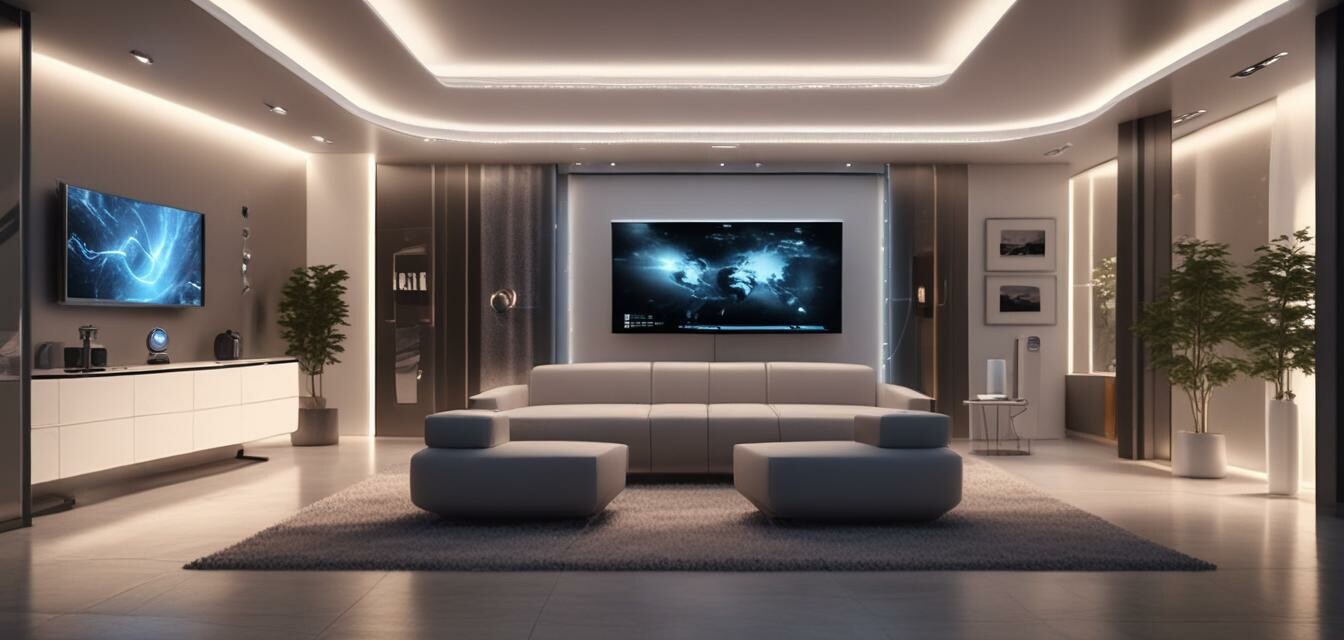
Smart Home Design Trends for 2025
Key Takeaways
- Seamless integration of technology will be a primary focus.
- Smart homes will prioritize energy efficiency and sustainability.
- Customization and personalization will enhance user experience.
- Technology will blend more with traditional decor.
- Health and wellness will influence smart home designs.
As we approach 2025, the world of smart home design is evolving rapidly, not just in terms of technology but also in aesthetics. Homeowners are increasingly looking for solutions that harmonize functionality with style. This article delves into the upcoming trends in smart home designs, illuminating how innovation meets beauty in our living spaces.
1. Sophisticated Technology Integration
The integration of smart technology into home decor is no longer a novelty; it's becoming a requirement. Smart features such as automated blinds, intelligent thermostats, and integrated sound systems will be seamlessly incorporated into the design, creating harmonious living spaces that don't look cluttered with gadgets.
Key Features to Expect
- Smart lighting systems that adjust automatically.
- Voice-activated home assistants that blend into decor.
- Hidden tech, such as charging stations integrated into furniture.
2. Sustainability Takes Center Stage
As environmental consciousness grows, sustainable materials and energy-efficient appliances will dominate smart home designs. Homeowners will seek solutions that not only enhance their living spaces but also minimize their ecological footprint.
Top Sustainable Solutions
| Feature | Description |
|---|---|
| Solar Panels | Integrating solar panels for energy independence, reducing reliance on traditional energy sources. |
| Smart Thermostats | Devices that optimize heating and cooling for energy efficiency. |
| Eco-friendly Materials | Using sustainable materials such as bamboo or reclaimed wood in furniture and construction. |
3. Customization and Personalization
The trend towards personalized smart homes is a game-changer. Homeowners will have the ability to customize their smart systems to fit their unique lifestyles, preferences, and family needs. This includes everything from tailored lighting scenes to customizable smart kitchen gadgets.
Popular Customization Ideas
- Unique lighting scenarios for different activities.
- Smart kitchen configurations based on cooking habits.
- Automated schedules for heating and cooling based on personal routines.
4. The Fusion of Traditional and Modern Decor
Smart home design trends in 2025 will see a remarkable fusion of traditional aesthetics with modern technology. Homeowners will prioritize designs that maintain their home's classic charm while integrating cutting-edge devices and systems.
Design Elements to Watch For
- Smart furniture with retro designs.
- Post-modern embellishments paired with state-of-the-art gadgets.
- Smart art displays that change based on mood or time of day.
5. Emphasis on Wellness
The importance of health and wellness in smart home designs will continue to rise in 2025. Homeowners will seek technology that supports physical and mental well-being through improved indoor air quality, intelligent lighting options, and even smart appliances that promote healthy living.
Health-Focused Smart Gadgets
| Device | Functionality |
|---|---|
| Air Quality Monitors | Devices that check and improve indoor air quality. |
| Smart Lighting | Lighting that adjusts according to natural light levels to enhance mood. |
| Smart Plugs | Plugs that monitor energy usage and promote energy efficiency. |
Conclusion
As we head into 2025, the trends in smart home design will increasingly reflect a blend of aesthetics with functionality. Homeowners will prioritize sustainable options, technologically advanced solutions, and customization to enhance their living spaces. By embracing these trends, you can ensure that your home stands at the forefront of smart living, enriching lifestyle and comfort.
Pros
- Enhanced convenience and comfort.
- Energy efficiency leading to cost savings.
- Increased home value through modern upgrades.
Cons
- Initial investment costs can be high.
- Reliance on technology may cause malfunctions.
- Privacy and security concerns with connected devices.
Explore More!
For additional insights and to deepen your understanding of smart home innovations, check out our other informative articles: